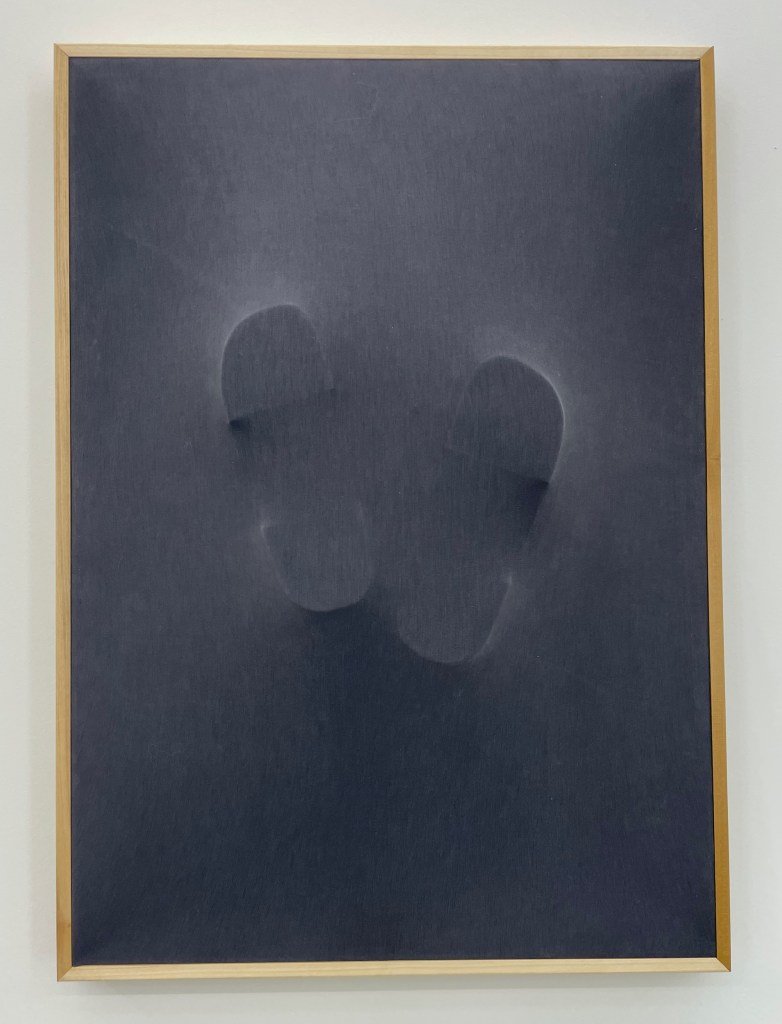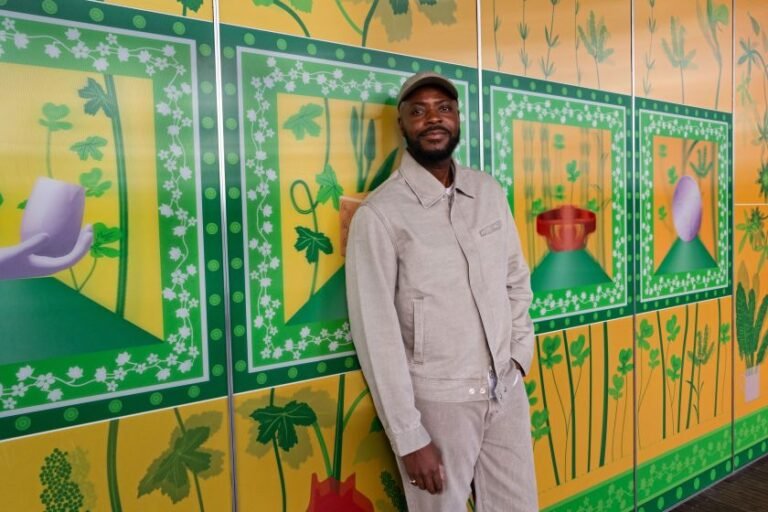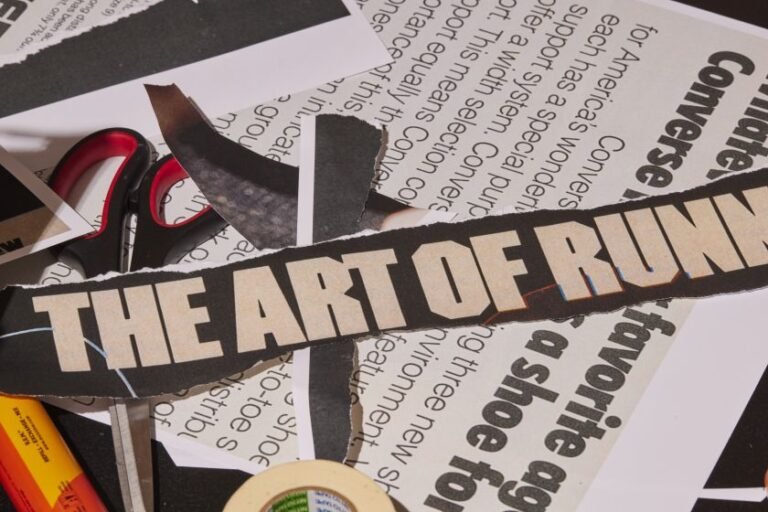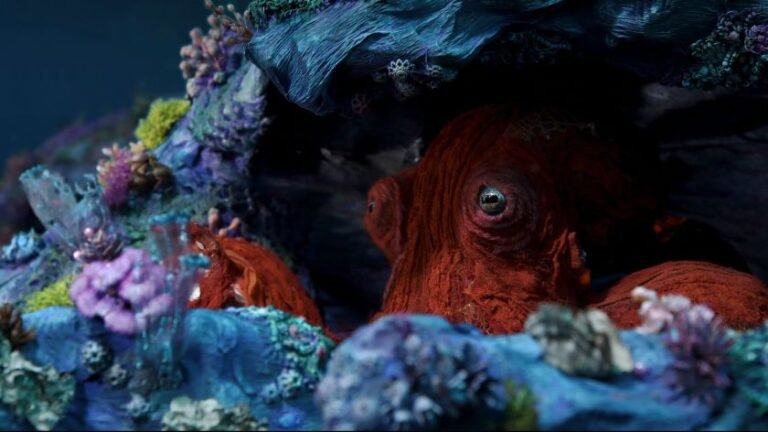

Kiah Celeste’s To Be Held for a Long Time is an understated but profound portrait of transformation. For the past several years, the Louisville-based artist has been creating sculptures from found objects. What separates her art from that of most artists working in this vein is the elegance of her aesthetic, and the way she coaxes life from the objects without recourse to sentimentality.
Celeste focuses less on the concept of salvaging discarded things than on discovering alternative identities for industrial or utilitarian objects that would otherwise sit in garbage heaps; she’s incorporated items ranging from vacuum hoses to used extension cords to sink drains into works that often have the awkward or spidery grace of modern dance — unsurprisingly, the artist is also trained as a dancer.
For her second show at Swivel, Celeste introduces framed wall reliefs to her repertoire of abstract sculptures. In “Standing Sideways” (2025), the navy blue fabric surface is pushed outward from the inside by the soles of geta sandals. The result is an uncanny and even unsettling disruption of a minimalist monochrome.

A similar sense of presence is evident throughout the show. In “Holy Mug” (2025), the artist threads 36 white mugs along a steel pipe by their handles, creating the appearance of vertebrae. Worn, bone-like heads of bowling pins placed in the mugs’ mouths accentuate the organic quality of the piece. Likewise, a peach-toned bike seat pressed against the inside of a spandex surface in the wood-framed relief “Untitled (Heart)” (2025) resembles an organ beneath a thin layer of skin through Celeste’s sleight of hand. A porcelain cabinet or closet knob sitting atop the bike seat on the exterior of the stretched fabric feels exposed and almost painful in this context, like a protruding bone.
Celeste’s ability to create holistic sculptural forms from disparate and disused parts is a feat in itself; even the most skilled post-minimalist sculptors have a hard time making CDs and DVDs transcend their cheap, mass-produced materiality, as she does with the circular, luminescent “Ouroboros” (2025). More significantly, though, this exhibition emphasizes how deeply the artist’s mostly synthetic composites dig into the organic, living body and its mortality. Yes, histories of human use are embedded in some of her materials — for instance, the car headrests in “Head Rest” (2025), an anthropomorphic form that is at once comical and elegiac. But her gorgeous, tactile sculptures also evoke skins and bones and pressure points, so that they’re not just symbolic of human lives, but reflections of embodiment in all of its fragility and resilience.
In “Antebellum Pink” (2024), possibly my favorite work in the show, pink fiberglass insulation peeks through slashes in paler pink fabric stretched around a low, rounded rectangular form. The violence of its allusions to cut skin is countered by the insulation’s cotton candy color and fluff. While this ambivalence keeps Celeste’s art from stagnating, it’s the imperfections and scars that keep it alive.



Kiah Celeste: To Be Held for a Long Time continues at Swivel Gallery (555 Greenwich Street, Hudson Square, Manhattan) through June 1. The exhibition was organized by the gallery.


